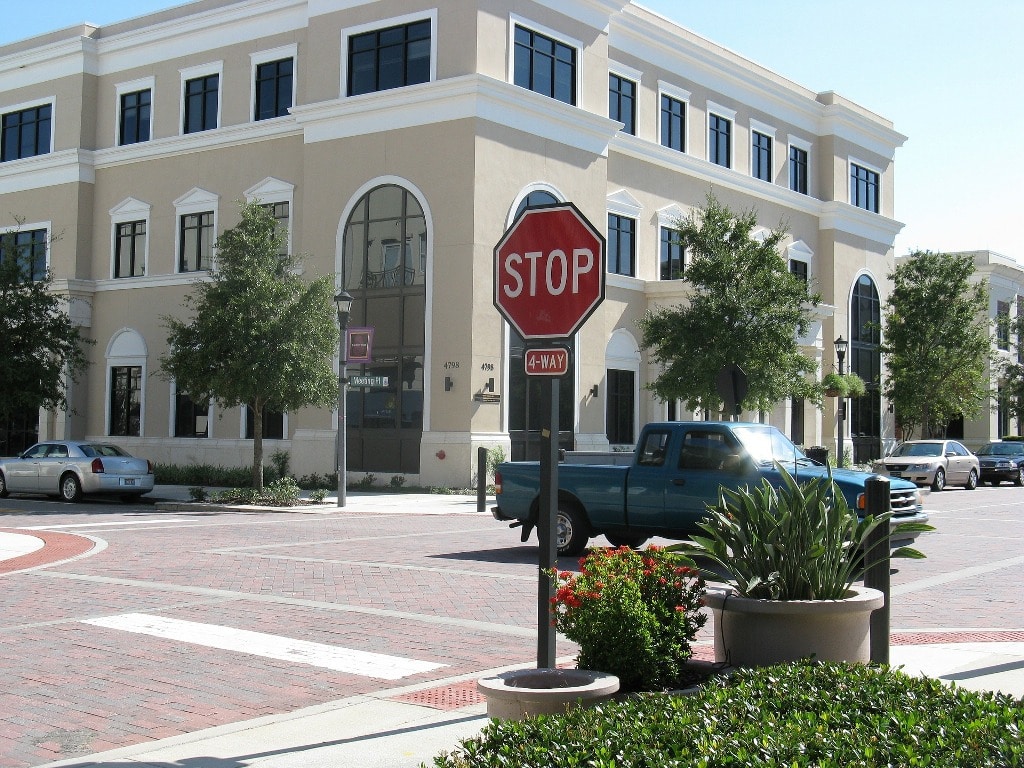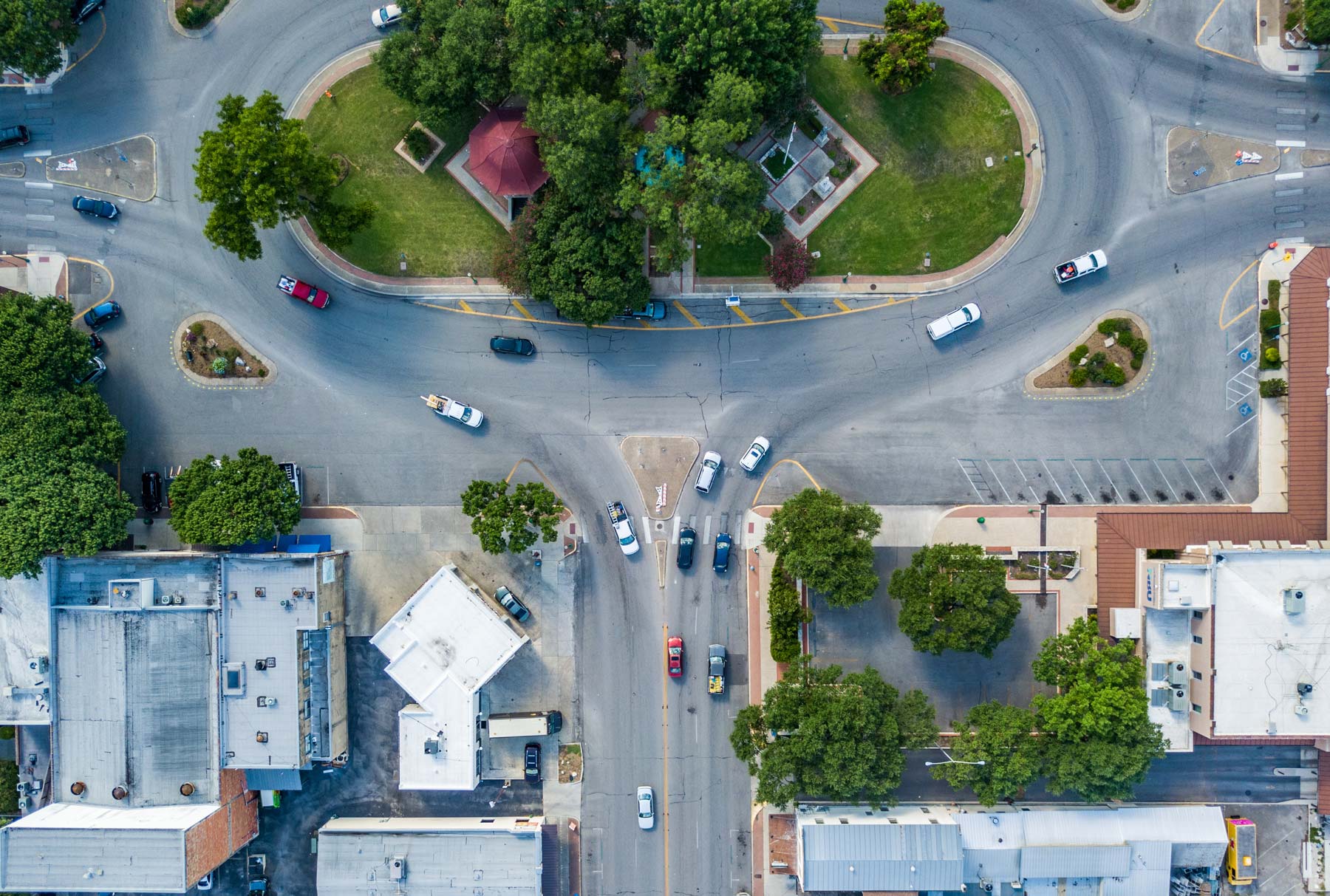It might be a good idea to avoid left hand turns as much as possible, as the chances of collision increase dramatically while taking on this tricky maneuver. In fact, 53 percent of car accidents involve a left-hand turn, ten times more than attempting right-hand turns, which account for only five percent. In light of this data, it’s a good idea to understand different left-turn scenarios and how best to combat the risks.
Scenario 1: Four-way Stops
There are many factors to consider in preparing for a left-hand turn. Let’s say you approach a four-way stop. Some states dictate that the car stopping at the intersection first should proceed first through the intersection; surprisingly, Texas law does not clearly define who should have the right-of-way, though most people naturally decide that the first person at the intersection should have the right-of-way.
One thing that is clearly defined is the general rule about all stop signs from section 545.151 of the Texas Transportation Code, which states that drivers must come to a complete stop and then proceed “when the intersection can be safely entered.” Applying this common-sense approach to navigating stop sign scenarios can help you remain out of harm’s way no matter what maneuver you’re attempting.
Scenario 2: Traffic Signals
Another familiar scenario is making a left turn at a busy intersection with a traffic signal where there is no light (such as an arrow) to specifically designate a turn. When making a left turn at a standard traffic signal, it is acceptable to “claim” the intersection by entering the intersection when the light turns green and waiting for oncoming traffic to clear before attempting to complete the turn. Sometimes the light may turn red before you actually get the chance to attempt the turn; though this may seem worrisome, it is okay to continue waiting until oncoming traffic stops and to then safely make the turn. Traffic laws state that oncoming traffic must yield for a car waiting in the intersection to turn.
While focusing on making that left turn at a traffic signal, however, make sure you’re also on the lookout for pedestrians. All too often, drivers are so focused on watching oncoming traffic that they don’t bother to check and see if pedestrians are crossing the lane that they’re about to maneuver into. While car/car collisions can certainly be severe, car/pedestrian collisions almost always result in devastating consequences.
Scenario 3: Getting Waved Through
Sometimes when you’re trying to make a turn, you may encounter a friendly driver who waves you through instead of maintaining the right-of-way. While their patience and good intentions are certainly appreciated, that person may not have surveyed the situation around them before waving you through. To avoid injury to yourself and others, then, you should acknowledge their courtesy but also make absolutely sure it is safe to proceed—regardless of what another driver has indicated to you.
And you may want to think twice before waving someone else through the next time you’re driving. Although Texas law does not explicitly define culpability as it pertains to communicating with other drivers, there have been a number of cases in other states where individuals have been held responsible for other people’s injuries and damage to property because they waved to another driver to indicate it was safe to proceed. Even if you’re 100% sure that it’s safe to wave someone through, you can never know exactly what another driver will do with that information; while you may just be waving them into to an open space in front of you, they may think you’re saying it’s safe to cross several lanes of traffic. Thus, careful observation and prudent decision-making are the best ways to prevent collisions.
Left Turns 101
Left-hand turns are ingrained within our infrastructure; there is no avoiding them, so it is important to do all that we can to make these turns safer for everyone involved. Be sure to approach all intersections calmly and observe your surroundings. Since turning left at any intersection takes more decision-making power than any other turn, please be sure to eliminate distractions and direct all of your attention to the task at hand in order to avoid dangerous crashes that can result in serious injury. At Crosley Law Firm, we want to be sure everyone is aware of the risks involved in these common left-hand turn scenarios. And if the worst should happen and you are injured in a vehicle collision, call (877) 535-4529 to schedule your free consultation with one of our attorneys.
References:
McFarland, M. (2014, April). The case for almost never turning left while driving. Washington Post. Retrieved from http://www.washingtonpost.com/news/innovations/wp/2014/04/09/the-case-for-almost-never-turning-left-while-driving/
Purcell, B. (2015, July). Texas traffic laws and good driving habits. Texas Highway Man. Retrieved from http://www.texashighwayman.com/laws.shtml#WaitingIntersections
Salee, R. (2007, October). Deconstructing the four-way-stop enigma. Houston Chronicle. Retrieved from http://www.chron.com/news/houston-traffic/article/Deconstructing-the-four-way-stop-enigma-1561482.php









